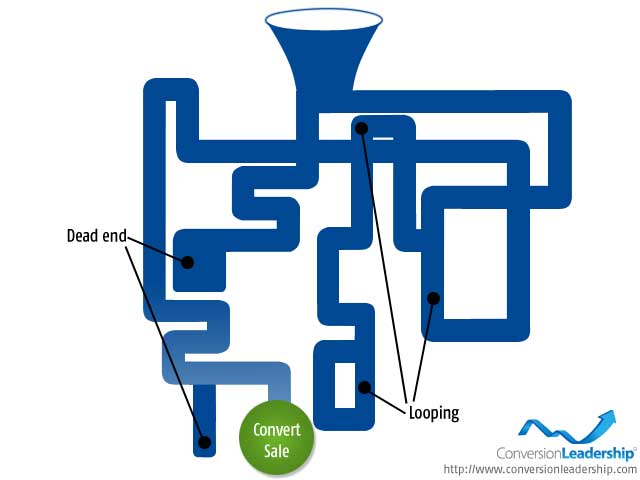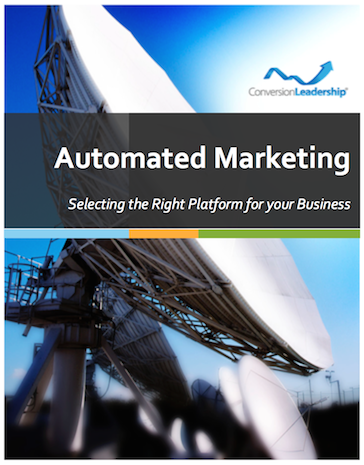Where Drip Campaigns Can Stop Sales Funnel Leakage

When building a sales funnel it can be easy to forget that 'People love to buy, they just don't like to be sold to.'
There's a kind of paradox here which can get you into all sorts of bother if you aren't paying attention to what is going on with your sales funnel.
Many sales funnel's experience some form of funnel leakage -
- Where leads end up dropping out of a campaign and never get sent to ever again.
- When lead scoring incorrectly calculates the lead status (as uninterested, as unsubscribed, as dead, as ready when they are not, as allocated to a non-existent sales person, or any other status that's possible but incorrect).
- The leads are forwarded to a dead-end (because someone has left the organisation, an invalid email address is entered or wrong location is specified, the process was redesigned but not everything was correctly reallocated, etc); or
- They simply get stuck somewhere within the funnel (due to an incorrect assumption made when the campaign was designed, built or modified).
The trick to reducing sales funnel leakage is to first identify where what ever is going wrong is happening and then work out what you're going to do about it.
5 Steps of Sales Funnel Engineering
Here we take a look at 5 high level steps of sales funnel engineering and investigate how you might choose to use a drip campaign (also called a nurture campaign) to solve your leaky sales funnel problems.
1. Clearly Define the Business Goals of the Campaign
Going further than simply thinking about your campaign in terms of, 'to remind the lead about us,' or 'sales promotion' is an important step in helping you identify where funnel leakage is occurring.
What you want to be doing is combining your sales and marketing goals with quantifiable metrics that help you track, analyze and quantify the effectiveness of the campaign.
For example 'achieve a click through rate of X over Y time period from list Z' or 'have X number of people from lead source Y sign up to our webinar using sales message Z,' or 'have X people known to be interested in Y click through to eBook landing page when emailed on A day at B time.' You'll note that these goals are specific and can be measured.
The more specificity you can bring to your goals, the more easily you'll be able to track and identify where leads fall out of your sales funnel.
Once you're using more sophisticated goals, you'll find that you'll need to increase your activities so that more of your leads match the criteria you're aiming for. This is where drip campaigns can come in handy... for example, consider using drip campaigns to nurture and bring leads from different lead sources into alignment so that you have a bigger group of leads to work with sooner.
2. Identify What Part of the Funnel Your Leads are In
It is important to know where in the process your leads are so that when you do devise offers, you can target and nurture their progress through to a sale.
Understanding if your leads are being generated at the top, middle or bottom of the sales funnel can help you determine how much more persuasion they may need to be exposed to before they're ready for a first trial close.
When you are able to map where your leads are in your funnel, finding out where leads are being left to age without attention is much easier. As soon as you find one of these dead spots in your funnel, get your team working on something that will continue the communication for the lead and evolve them to a point where they can be tipped into another campaign. A drip campaign can be your friend here; simply by adding a few emails you can quickly get a solution in place.

3. The Right Contact at The Right Time
We all know, the offers you make to your potential customers are the backbone of drip campaigns. Offers are that weak, non-targeted or delivered at the wrong point of the funnel, will get you a low response rate.
The traditional steps from prospect to sale in a campaign that nurtures your prospects are -
- awareness & education (top of the funnel);
- build a relationship & trust (middle of the funnel); and
- convert your prospect into a customer (bottom of the funnel).
The top of the funnel responds well to low commitment offers with lots of information (this includes blogs, eBooks and white papers). The purpose here is to educate and pretty much everyone does this with drip campaigns really well.
The middle of the funnel is where you tell the prospect why they should deal with you (seminars, webinars, assessments and case studies are good for this stage). This is where we start to see the difference between the businesses who have great customer lifetime value and everyone else.
Those businesses who take the time to continue and persist with drip campaigns that fit with the interests of their prospects get the edge over their competitors here.
It is the bottom of the funnel where you get into sales mode. This stage includes -
- asking for the sale
- incentives such as discounts, free trials & complimentary products/services
- up selling, cross-selling and down selling
- personal attention including phone calls, face-to-face meetings, individual email correspondence
Most sales funnel leakage occurs due to problems with having the right type of contact and message at the right time in this part of the sales funnel.
In our experience, it's mostly in the bottom part of the sales funnel that leads get lost - sometimes because of system complexity and breakdowns in communication, but usually because it's assumed that automation has gotten the lead so far that automation can take the prospect the whole way.
There are a few people who are absolutely comfortable with completing an entire transaction as self-service, but the majority of people need to know at some point (before they spend their money) that there really is a business, that employs people, who they are about to buy from.
For the top and middle parts of your sales funnel, you want to be extending your campaigns using drip campaigns and potentially introduce some form of lead scoring. So that as your lead gets closer, you know when to step in with your people and time to close the deal.
4. Your Sales Funnel Timing is Crucial
The difference between a drip campaign and what the recipient considers spam, is usually all in the timing.
As much as it would be helpful if there were rules about timing and volume of email; sadly there just isn't.
In the real world, there are just some buying decisions which happen much faster than others. For example, people decide to buy a take-away meals quicker than buying a car.
There are many guidelines on how many messages and how often they are delivered. For example, some experts say you don't need to do more than three to five emails as part of your campaign and you need to space these emails out over an increasing amount of time. Others will tell you that you should plan for two email messages per week over 26 weeks.
Unfortunately, it's because of these guidelines that many sales funnels leak.
Instead of testing and tracking how leads are responding to campaigns, some build funnels using "rules" that are based on these guidelines with a set and forget mentality.
A fast moving entrepreneur may just about be able to "get away" with this strategy and achieve reasonable results initially. However at some point you'll need to make time or pay for someone else to audit your funnel and likely redesign some of what's going on so that it's a better match to your prospect's expectations.
If you're at the beginning of the automated sales funnel challenge.
The first thing you can do to develop what best works for your target market... start with building drip campaigns to handle the situations that are desperately urgent for your marketing and sales teams. This will give you the time and data to evaluate what your market responds to best.
For those who have marketing CRMs overflowing with campaigns, templates and complex workflows.
It's about scrutinizing your most successful campaigns & messages to understand what exactly is working and then testing out your ideas and insights on the other less successful campaigns & messages.
We aren't just talking about the topic, creative or content here, but the delivery - day, time, frequency, resistance to spam filters, message file size as well, flow from one message to the next, anticipation, trust and familiarity you build plus anything else you can think of.
5. Track and Report on Your Sales Funnel Campaign
Your campaign is no good to you if you don't know how it's going.
You want to capture as much data as possible - the personal details for your leads, as well as how they engage with whatever you present to them.
That doesn't mean you have to collect it all up front; in fact there are many talented campaign designers who recommend gathering personal details over time as you increase the prospects likelihood to buy, using drip campaigns.
The great thing about doing this is that the amount of detail you have about a lead in your CRM or contact database is then also a signal for how ready they are for a sales call or trial close.
It hopefully goes without saying, that being able to count, track, measure, compare and analyse what your leads are doing with each of your communications is vitally important.
Go beyond the obvious things like your orders, transactions, emails and clicks. To get even greater business intelligence from your sales funnel.
Your data becomes even more useful when you can see at what point in your funnel your lead was when they did something. Better still is when you can see the path of engagement they followed that got them to buy.
Because if this path was persuasive enough to get one sale, then it will probably work for a lot more people... And that, after all is the whole point! Getting a lot more people to buy from you.

